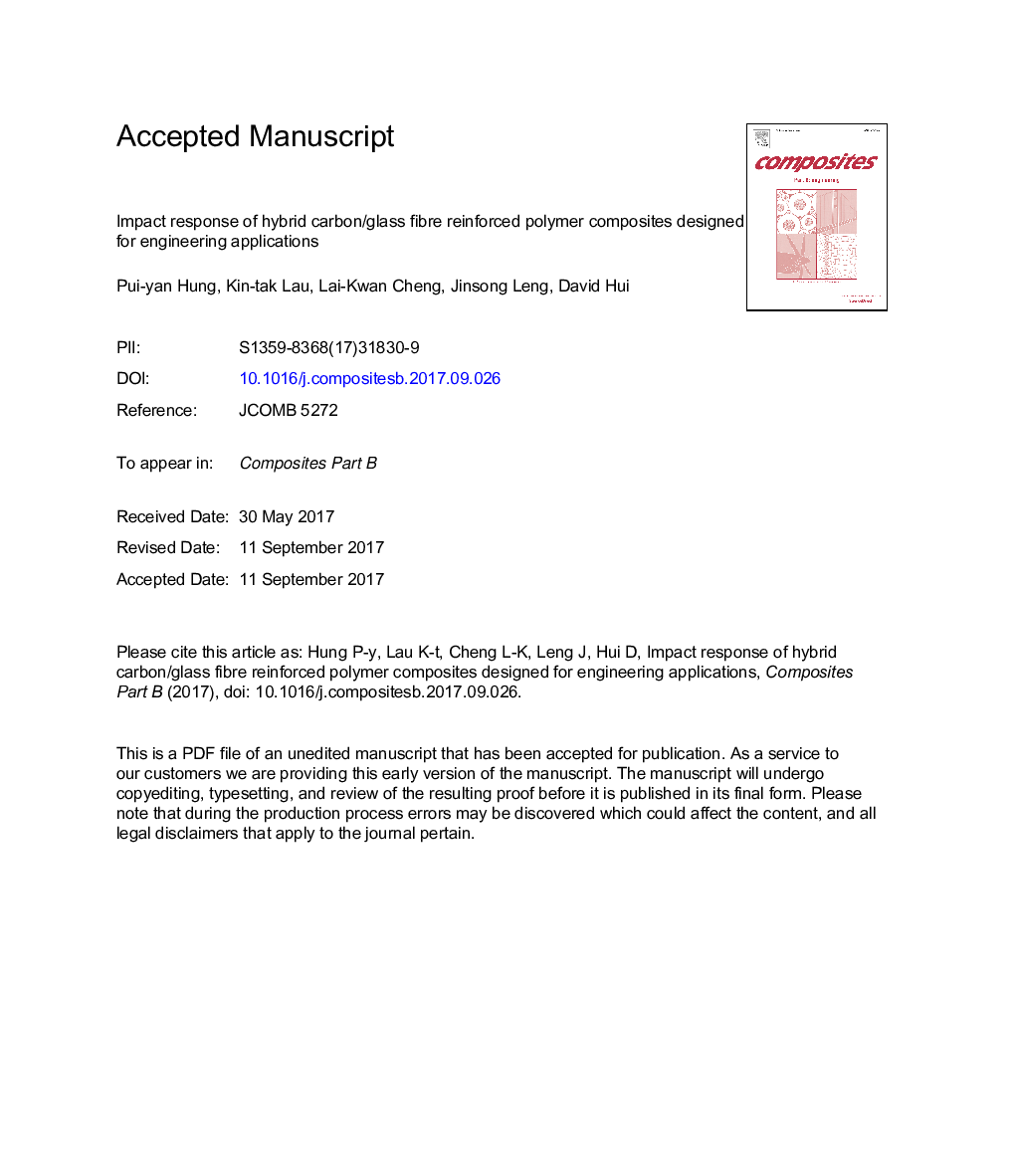| Article ID | Journal | Published Year | Pages | File Type |
|---|---|---|---|---|
| 5021039 | Composites Part B: Engineering | 2018 | 14 Pages |
Abstract
Hybrid Composites, made of two different types of high strength fibre cushioned with a relatively low strength matrix to meet specific strength requirements, have been recognized as modern materials for many engineering applications. They are lightweight and low cost as compared with using a single type of fibre to make structural components, which may be over-strength and not cost-competitive. Carbon fibre is extremely strong, contributing to a thin, light but strong structure. To a certain extent, it is too costly and induces a problem of structural instability due to the decrease of second moment of inertia as compared with the use of traditional metals for designing a structure. Hybrid composites are able to minimize aforementioned problems with a low cost solution to meet the requirements. However, the design of materials and structures becomes a key challenge on how to fully utilize the benefits of these fibre to make a structure strong enough to withstand different loads imposed on it. This project aims at experimentally investigating the low-velocity impact responses of hybrid carbon/glass fibre reinforced polymer composites. It was found that a hybrid composite with surface carbon fibre layers would help minimize the risk of damage, in terms of the size of damage and deflection subject to an impact load. However, failures by impactor penetration were observed on some samples. Severe damages were found on samples with surface glass fibre layers and carbon fibre in core. Images captured by the thermography technique demonstrated that localized damages (delamination) existed within plies in a failed sample, which normally cannot be detected by using traditional visual inspection techniques.
Keywords
Related Topics
Physical Sciences and Engineering
Engineering
Engineering (General)
Authors
Pui-yan Hung, Kin-tak Lau, Lai-kwan Cheng, Jinsong Leng, David Hui,
